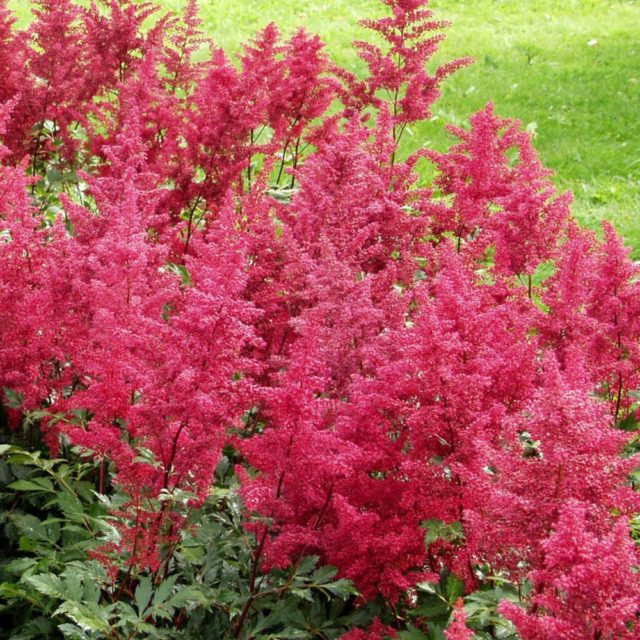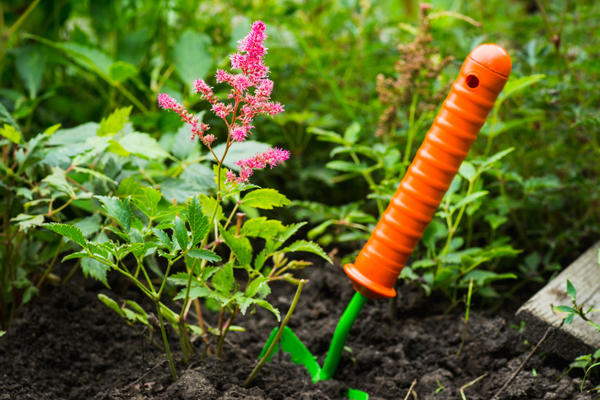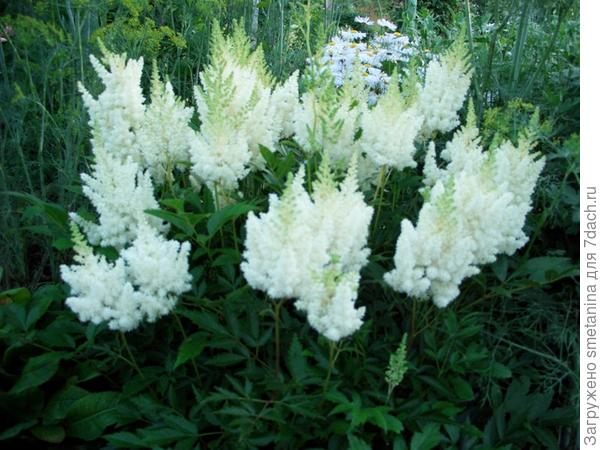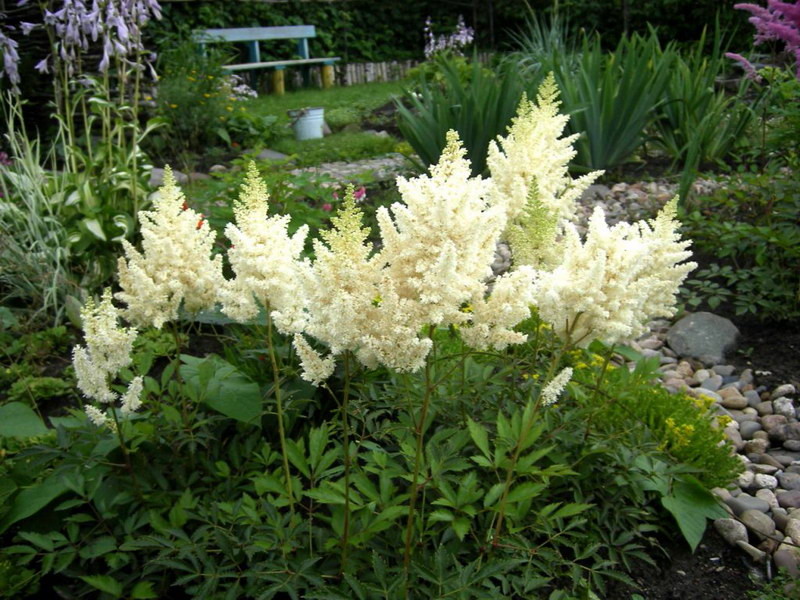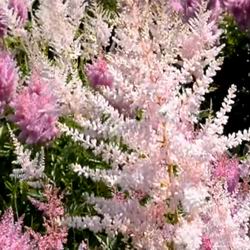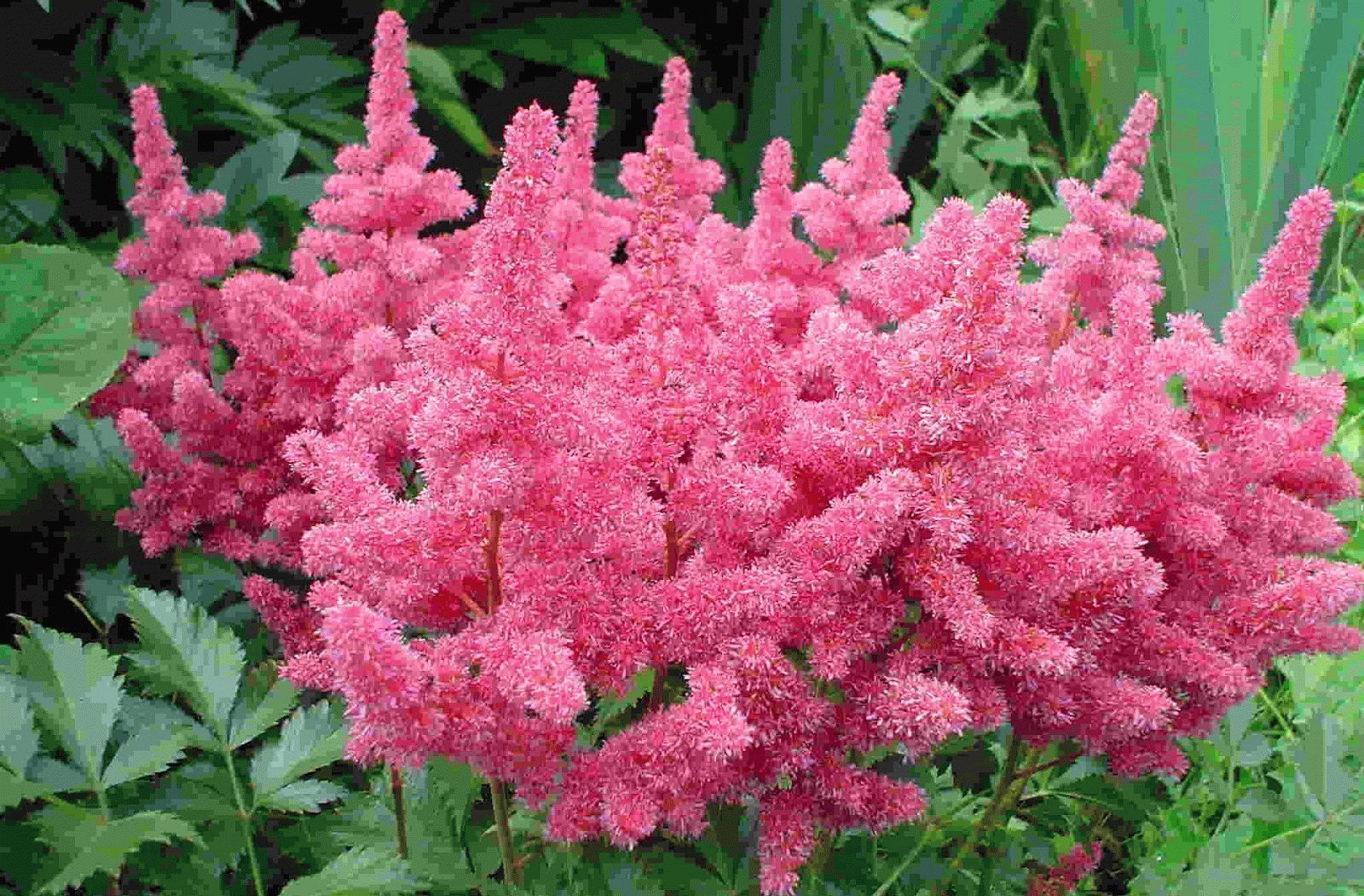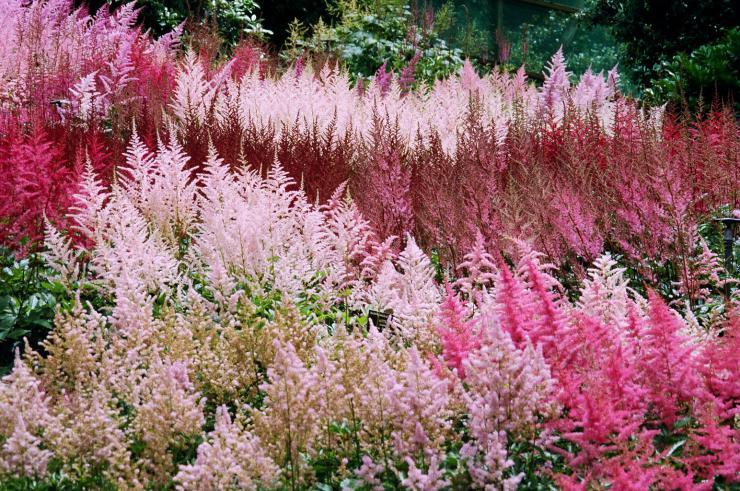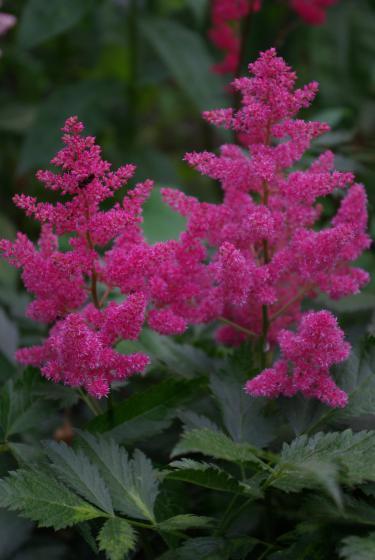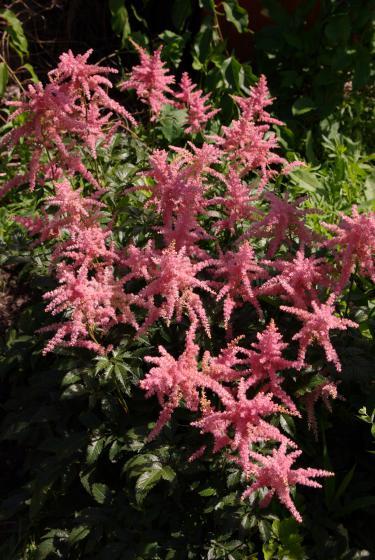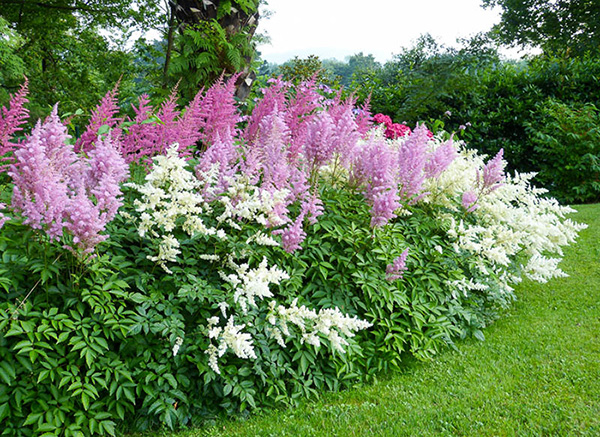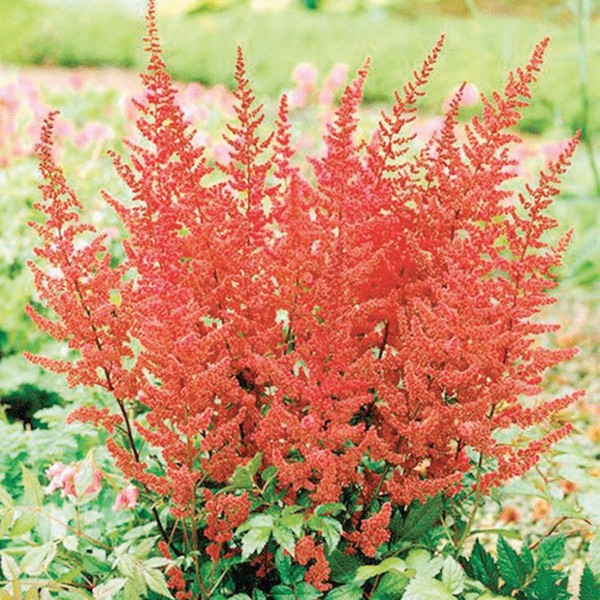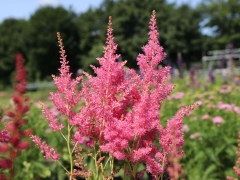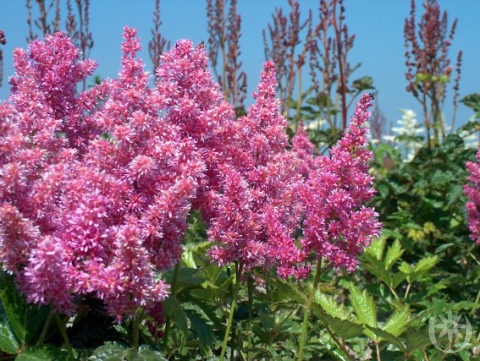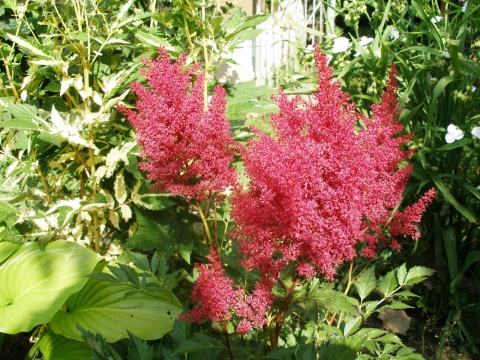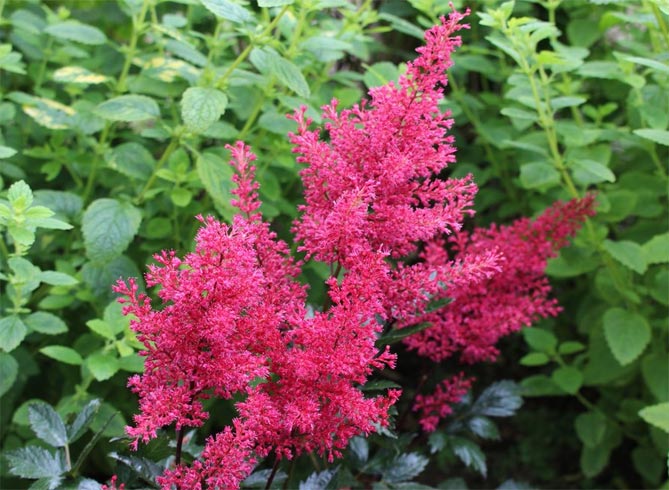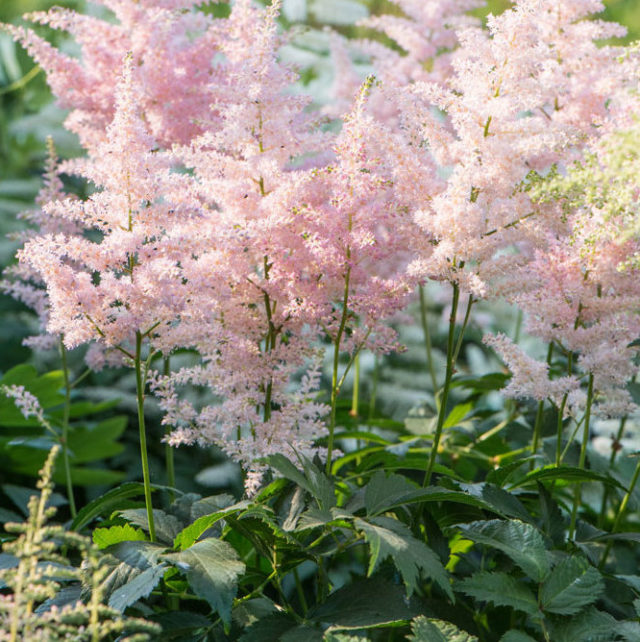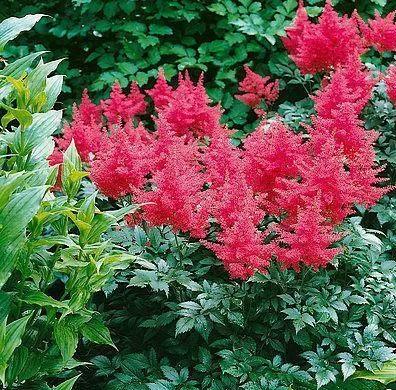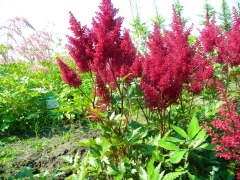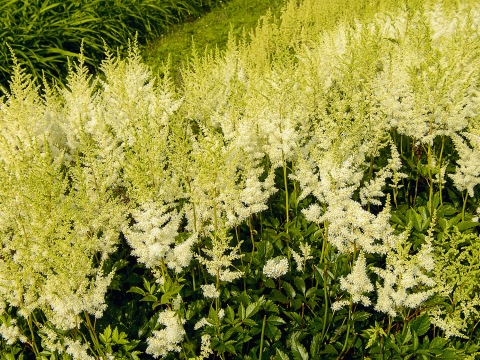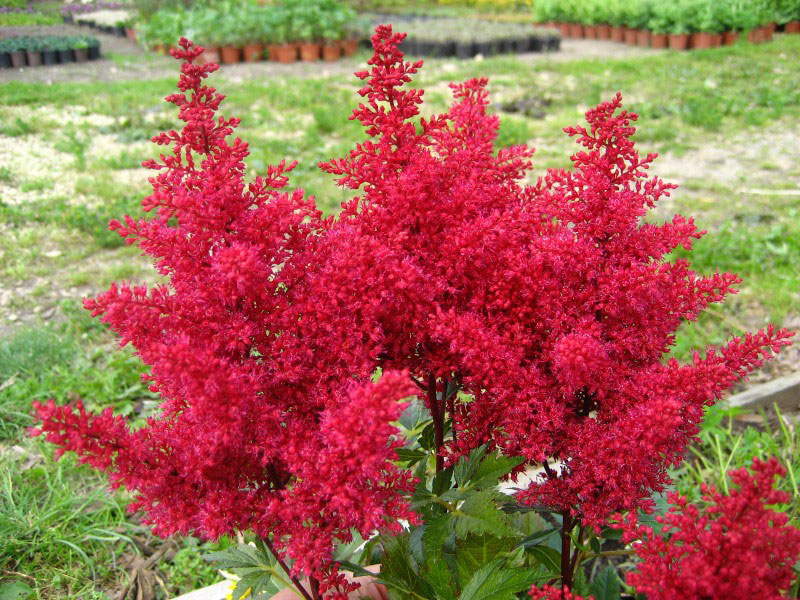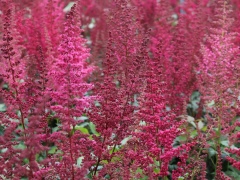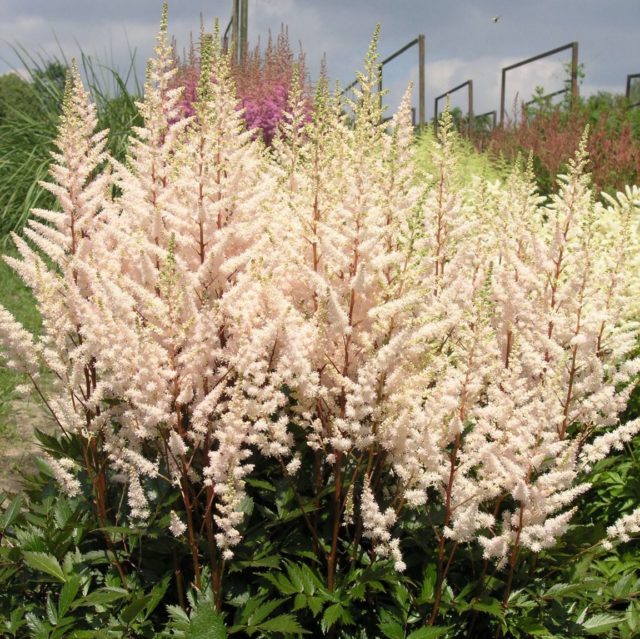Reproduction
Reproduction is carried out by two methods - seed and vegetative, that is, by dividing the shrubs. In the first case, the purchase of seeds is recommended to be carried out in a specialized store.
Be sure to pay attention to the expiration date. You can also collect them from plants.
It is allowed to store in paper packaging in a dry place.
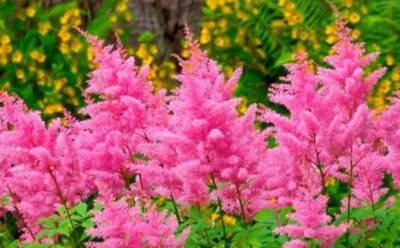
Before starting to grow, it is necessary to stratify the seed. Thanks to this, the seedlings will be strong, they will begin to grow and develop faster. In the spring, you need to prepare a box for planting seeds. Its height should be 15 cm. Fill the container with a mixture of sand and peat. Then sprinkle the seeds and moisten them several times. Then you need to immerse them in the ground. Cover the box itself with plastic wrap. Store it in the refrigerator for three weeks.
After that, it is allowed to place crops in a warm place with a temperature of + 18 ... + 22 C. After a half month, the first shoots will appear
They need to be watered very carefully - only at the root. When the third leaves appear on the seedlings, it is recommended to transplant each individual sprout into a new pot.
Thanks to this, in the future it will be much easier to plant a plant on the site. Depending on the variety, before flowering, you will have to wait a long period - 3-4 years.
You can also reproduce astilba by dividing the bushes. This method is simpler and more efficient. In addition, several young ones can be obtained from one shrub at once. It is best to divide the plant in the spring - before flowering begins. You can still do this in the fall, after the flowering period is over. But in the northern regions of the country, it is better to carry out the procedure in spring, so that the plant has time to adapt before the frost begins.
Reproduction by dividing the bush should be done according to the following algorithm:
- dig out the bushes, trying to damage the root system as little as possible;
- remove soil from the root;
- with a clean and sharp knife, cut the rhizome into several parts, and so that each has at least three growth points;
- the dried part, which is located below, must be cut off;
- plant the resulting sprouts in pre-prepared holes and water them.

After about a year, young shrubs will bloom.
Why is astilbe grown?
Who does not want to have a decent garden, every gardener dreams of this and knows that his dream can come true and all this will happen thanks to astilbe. Caring for such a plant does not require over-effort, but the return is quite decent. To make the flower look decent in the garden. Growing this miniature flower will bring beauty and variety to any interior of a house, a summer residence, any apartment. Maybe that is why this mini-flower is grown, because it looks decent in pots on windowsills, in any vase. It will make a lush bouquet, which can easily be presented to your beloved girl or woman, expectant mother, for an anniversary or a wedding.
How to plant?
In order to properly plant the Japanese anemones in open ground, you should first take care of the correct choice of the place for its growth. This flowering plant thrives in open areas that provide sufficient daylight hours. But some varieties tolerate partial shade well, and in the south it is even better to plant them in parts of the garden shaded during the day.
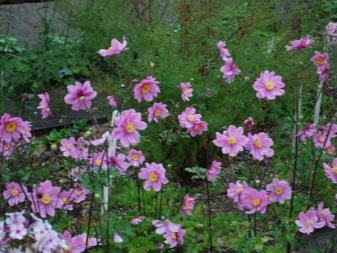
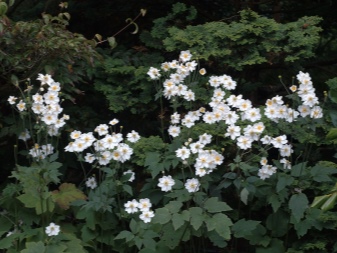
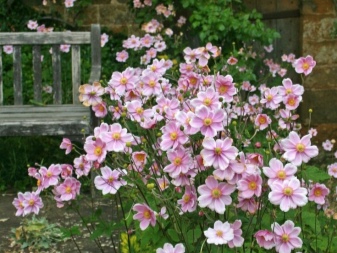

When it comes to hybrid varieties, you should pay attention to the fertility of the soil. Breeding varieties and species types feel great on soils with a rather poor mineral composition.
The recommended acidity values are closer to neutral
It is important to ensure good drainage of the site prepared for planting. This is done using expanded clay, broken brick
In the process of planting, pieces of the root are usually used - it is creeping, therefore it is well suited for division. You can prepare planting material by first placing it in water at room temperature. After soaking, the roots are shortened by cutting off the dry ends, and they are planted, placing them at a depth of 5 cm. In group plantings, the planting pits are placed at a sufficient distance from each other. If the anemone is already growing on the site, it is in the spring that the roots are divided.


General characteristics of the group
Description
According to the development cycle, Japanese astilba is a herbaceous winter-hardy perennial, the decorative properties of which are both flowers and foliage. The ground part dies off in autumn, in spring young shoots appear from awakened buds.
The height of the bush of most representatives of the Japanese astilba varies within 50 cm.Some varieties can be classified as real giants - up to 80 cm.
The inflorescences of this type of astilba are predominantly of increased density, rhombic, reaching sizes of 15-30 cm. The color range is very rich. In the group, there are both samples with panicles in plain bed tones, and rich bright ones: carmine, pink, lilac, cream, etc.
Leaves are bipinnate, glossy, often toothed, sitting on brownish petioles. Specimens are cultivated with both dark and light green plates. In all varieties, the top of the leaf is pointed.
Agrotechnics
Japanese Astilba prefers slightly acidic (neutral) soil, loam. Many varieties reproduce both by self-sowing and by dividing the bush. Seed germination is weak (about 70%). However, this deficiency is compensated by the amount of planting material - up to 20 thousand dusty seeds are hidden in a gram of dry inflorescence.
More often, gardeners propagate the Japanese perennial by dividing the bush, which is a vital necessity for astilba. Frequency: 1 time (at the end of August) in 4 years.
Less often, flower growers throw seeds into open ground before winter. And finally, the sowing of Japanese Astilba on seedlings can be considered a phenomenon. The deadline is the end of February.
When preparing holes for divided rhizomes, keep a distance of ± 35 cm. This distance is enough so that the neat bushes are not cramped, and soil spots do not shine through the lush foliage.
Ideal growing conditions: partial shade, moisture. Certain varieties of Japanese Astilba are sun-tolerant. Drought is equally disastrous for all members of the group.
main destination
Japanese astilba is the ancestor of many early and middle hybrids, which have become an indispensable element of any shady flower garden: mixborder, border. You cannot do without Japanese perennials when decorating an artificial pond or stream. Also, this plant has shown itself well in decorating the trunks of tall trees in the garden.
Planting and caring for Japanese astilba
The cultivation of an ornamental shrub is carried out in compliance with a number of rules. When planting and subsequent care, it is necessary to take into account the varietal characteristics, which can be learned from the description of Japanese astilbe.
First of all, you need to choose a place. Japanese astilba should be planted in a shaded area. Most varieties react negatively to abundant sunlight. The soil should be moist, but no liquid stagnation.
Landing Algorithm:
- Dig holes 30-35 cm deep.
- Prepare a potting soil mixture from garden soil with the addition of compost and peat.
- Fill the hole with soil.
- Place the planting material inside (usually bulbs are used).
- Add 1 spoonful of bone meal to the ground.
- Cover the onion with potting soil.
- Drizzle with water.
Important! Planting is recommended in the spring. Planting in open ground in autumn is allowed if the variety is cold-resistant ..Landing technology:
Landing technology:
The first year in the open field, Japanese Astilba does not need fertilization. Only regular watering is required to maintain constant soil moisture. It is carried out 1-2 times a week. In the second year after planting, organic fertilizers are applied: peat, compost, tree bark.
To preserve moisture in the soil, mulching is carried out. Use bark, sawdust and straw.
Mature bushes can be divided. The procedure is carried out in August. Surface shoots are cut off. The division is carried out no more than 1 time in 4 years.
Most varieties of Japanese astilba are disease and pest resistant. Damage can be caused by nematodes and pennies. To prevent the attack of pests, the plant and the surrounding soil should be treated with insecticides twice a year.
For the winter, the plant is cut off, leaving 3-4 cm of external shoots. Roots should be covered with fallen leaves, needles and straw. It is impossible to sprinkle them with soil in order to prevent the growth of roots.
Usage
The first tasting showed that this is a rather tasty green culture, the leaves, although pubescent, are quite tender, with a slight mustard or rather radish flavor, reminiscent of arugula, but less harsh in taste. Bitterness, like that of mustard leaf, is not felt, there are much less mustard oils in mizuna foliage.
Although greens can be cut off, leaving the root, I advise you to pull out by the roots for long-term storage in the refrigerator and store unwashed in a plastic bag. So my mizuna was kept very well for more than a week. This is convenient for summer residents who visit their gardens only on weekends.
Japanese cabbage can be consumed fresh, salted, pickled and dry. Recommended for sandwiches, especially with cheese, feta cheese, and most importantly - for any salads - vegetable, meat and fish and even fruit. In salads, it withers pretty quickly, so it is better to use them immediately, although you can finish eating the leftovers the next day.
I have used it in pies as a substitute for spinach. Here's a cheese pie recipe, which is usually made with spinach, but mizuna brought in new flavors, making it a little spicier and more interesting.
Pie with feta cheese and Japanese cabbage
I took the puff yeast dough (purchased), for 2 pies with a diameter of 26-28 cm - 3 packs-rolls.
Filling for 2 pies:
2 packs of cheese "Parisian Burenka" (you can Fetaks, who likes pieces),
2 packs of cottage cheese 5% "Lakomo", 300 g each;
2 large bunches of greens of Japanese cabbage (about 300-400 g each);
2 large cloves of garlic, finely grated;
some black pepper
Recipe:
Defrost the dough and place on the bottom of a buttered baking dish. For the filling, knead the feta cheese, add the cottage cheese, mix, distribute the grated garlic and black ground pepper. Add greens of Japanese cabbage, chopped in a blender and squeezed from the juice. Stir the filling and spread over 2 cakes. Top the cake with a grid of dough strips. Trim the edges with a rolling pin, use the rest of the dough to decorate the cake. Proof for 40-50 minutes. to a warm place. When the cake comes up, grease it with a beaten egg with a fork and 1 tablespoon of water and bake at + 230 ° C in a preheated oven for about half an hour. The pie is good both hot and cold.
If someone finds the filling taste too radish, you can mix Japanese cabbage greens with spinach leaves, a little dill, any salads that have grown in your garden. And, of course, such a pie made from homemade yeast, not very rich dough, is even tastier.
Here are some more recipes with Japanese cabbage: Salad with ham and mizuna in mustard oil, Rolls with zucchini, avocado and mizuna, Rolls with mizuna and avocado, Salad with mizuna and mushrooms in mustard dressing, Fruit salad with mustard dressing cheese.
Hybrid forms and varieties
The pink herb has different hybrid forms, which differ from each other in the flowering period, the color of the buds, foliage, and the height of the stem. This perennial can have the following varieties according to the flowering time:
- early flowering, which blooms in the first days of summer;
- medium flowering, the flowering phase of which occurs in the middle of summer;
- late blooming, which bloom in August.
Dwarf
The most interesting dwarf varieties of Chinese astilba are considered to be the following.
"Pumila". This plant differs from the rest in its growth and color of the buds. An adult perennial can grow up to 40 centimeters. "Pumila" blooms with beautiful lilac-pink flowers. The culture perfectly tolerates low temperatures, surviving even at -28 degrees.
Medium-sized
In addition to dwarf varieties of Chinese astilba, gardeners often prefer medium-sized representatives of this culture. These include the following plants.
"Milk and Honey" is an original variety of Chinese astilba, which has memorable external characteristics. This spreading and densely leafy bush can grow up to 100 cm in height in the shade, and in a well-lit area - no more than 0.7 m. The variety is characterized by the presence of brownish internodes. In an adult plant, the leaves have a spring green color and unusual edges. The jagged foliage is inherent in delicacy and originality. The culture begins to bloom in mid-July and ends at the end of summer. The buds appear to be a fluffy pearl white, but can later become pinkish. The aroma of Milk and Honey is subtle, sweetish. Perennial responds well to regular soil irrigation.
High
Such varieties are classified as tall Chinese astilbe.
"Visions in ed." This herbaceous perennial grows up to 0.3 m in height and width. This Chinese astilbe is recognized as one of the most attractive in appearance. The culture has purple-red buds that are located on red shoots. The flowering period of Vision In Red is about a month. The variety is characterized by good frost resistance and unpretentious care.
Description
The dwarf Astilba is a rather unpretentious flower, among other advantages, it has one more thing, it can be grown in shaded places.
Almost all garden plots have dark corners in which these dwarf plants will fall in place. In contrast to this flower, many plants prefer the sun's rays, in large quantities
So, dwarf astilbe has a number of advantages that allow you to draw attention to itself. This mini-plant was named after its leaves, where "a" is very, "stilbe" is shine and sounds like a very shiny plant, because in fact it is
Especially this flower shines at the moment when it is gaining flowering growth. This process takes place in July and may end only in August. These dwarf flowers are very popular, there are more than 200 types of them, there are many classifications, where designers have a very large selection for a variety of ideas.
Correct fit
Planting is not difficult, and even a novice gardener can handle it. In the Urals, it is better to do this procedure at the end of May, after the frost has passed. In Siberia, it is also recommended to plant astilba at this time.
It is imperative to choose the right place. It is better if the area is slightly darkened. You can place astilba under bushes or trees. To keep the air humidity high, it is recommended to place the plant near a pool or fountain. The flower will be able to grow in open areas with direct sunlight, but in this case the flowering time is much shorter, since the inflorescences burn out quickly. In addition, you will constantly have to water the soil.
Other crops can also be located on the site next to astilba. Iris, bergenia, ferns, hosts, bells, geranium are perfect.Various primroses will normally feel near the main crop. Perennials of small height look beautiful next to astilba. A saxifrage, tenaciousness, grains and others will do.
It is important to choose the right seedlings. Young shrubs must be purchased from a specialist store.
It is recommended to purchase rhizomes, as their keeping quality is much better if stored in the refrigerator. In the package, the filler should be peat and sawdust. The substrate must be moist.
The seedlings themselves must meet the following requirements:
- to be in a state of hibernation;
- there should be no regrown or pale shoots;
- the root system is healthy, resilient, flexible and clean;
- there are no symptoms of various diseases;
- growth buds should be on the seedlings.
In the open field, the plant will feel great. It is imperative to choose the right soil. Nutritious, loose, loamy is better. The acidity level should be medium. The site needs to be cleared of debris and various weeds. Then dig up, and in the process add two buckets of compost for each square meter. You can use peat or manure.
Wells are recommended up to 20 centimeters deep. There should be a distance of 30 cm between them. Be sure to add half a glass of ash and a large spoonful of complex-type mineral fertilizer to the pits. After that, water the hole thoroughly.
Only after all the above manipulations are it allowed to plant seedlings. All seedlings must be placed in the holes and sprinkled with soil so that the growth buds are located in the substrate by 5 cm. Then press the soil a little, water it and make a layer of mulch (use peat or humus). The latter helps not only to restrain the growth of weeds, but also protects the roots of the bush from overheating and can retain water.
Description
The plant got its name for its beautiful, dark green shiny leaves. The leaves are tripartite in shape, long-petiolate, toothed. During the flowering period, the plant has small flowers of a rich dark red color, sometimes with a crimson tint, combined into dense elongated diamond-shaped or pyramidal inflorescences 17-18 cm long, 9-10 cm in diameter. Japanese Astilba usually blooms in July-August , and lasts over a month. The Montgomery variety is capable of producing inflorescences containing flowers of different colors and shades. It looks very pretty. Outwardly, Montgomery is a sprawling bush with erect stems, 0.6 - 0.7 m high and the same width. The plant has a kind of rhizome, on which new buds are created in the upper part every year. The rhizome gradually grows upwards by 3-5 cm and becomes bare, while the roots in the soil die off. Astilba fruit looks like a box filled with small seeds.
The plant has found applications in Chinese medicine. Rhizomes are used to lower blood pressure in diseases of the bladder, kidneys and ureters.
Severity
Option 1. Reflexes are preserved, but lethargy or lack of consciousness is revealed, there is a weakening of skin instincts and an increase in muscle tone. All this is the result of a weak manifestation of the destructive process of brain cells during an attack and a certain suppression of the abilities of the nervous system.
2nd degree. The victim falls into deep sleep. Movement to stimuli from the outside, skin reflexes and pain threshold are absent.
3 degree. This condition is caused by extensive hemorrhage in the parts of the brain, its definition is due to the detection of the disappearance of reflex abilities, consciousness, the reaction of the eyes to light rays.
Option 4. The chances of surviving in this position are very small, due to the missing spontaneous breathing, lightning pressure drop and hypothermia. Movement and instinct completely disappear.A patient who falls into such a manifestation is actually deprived of the opportunity to maintain the old way of life.


